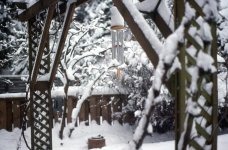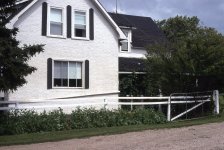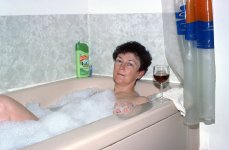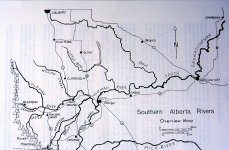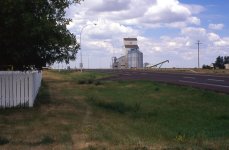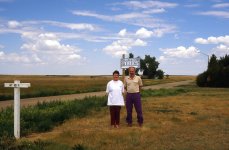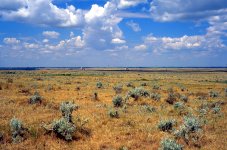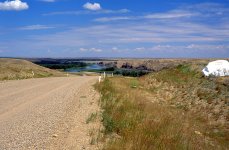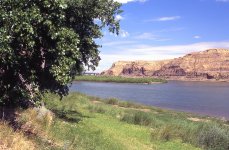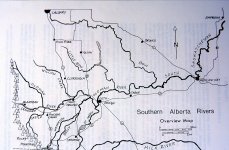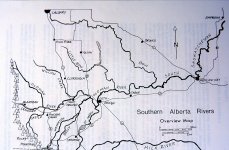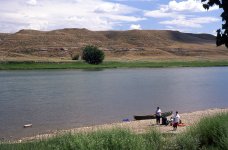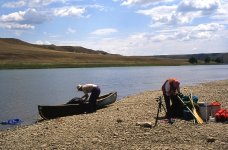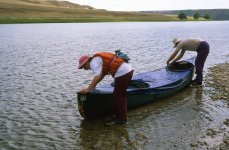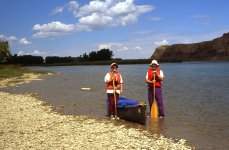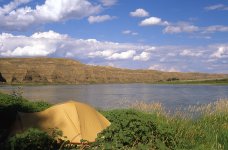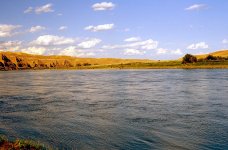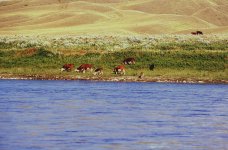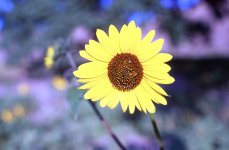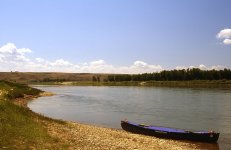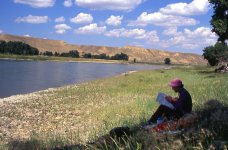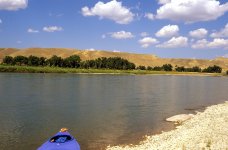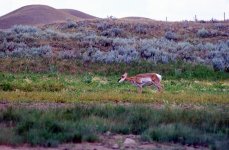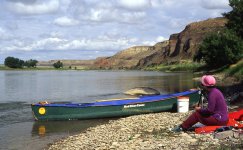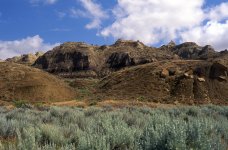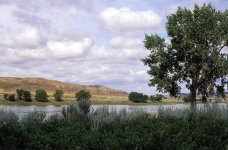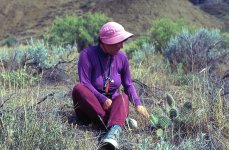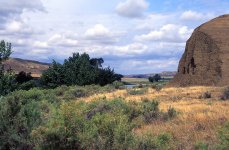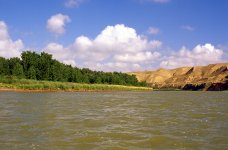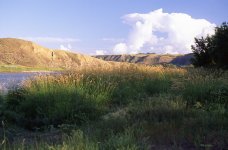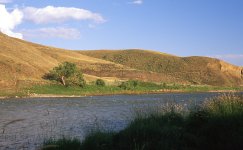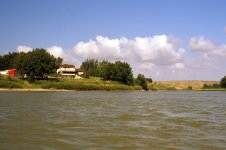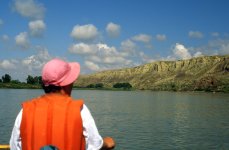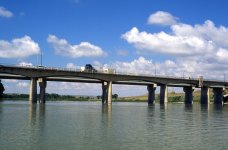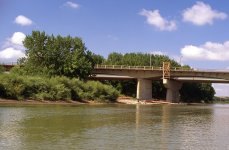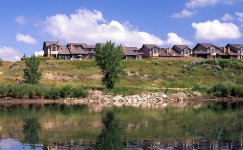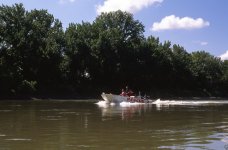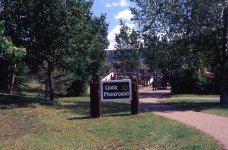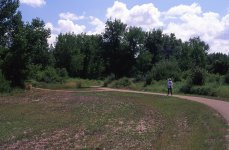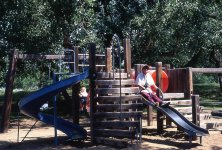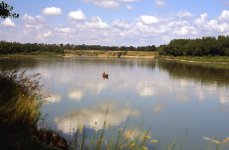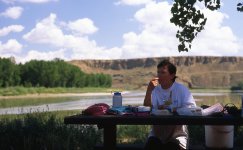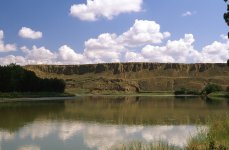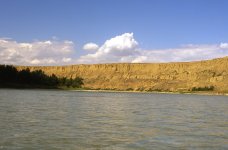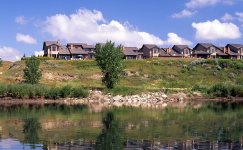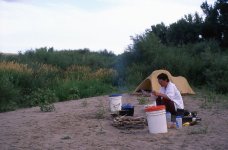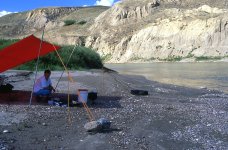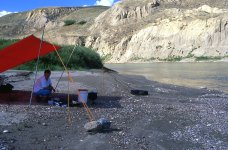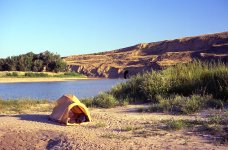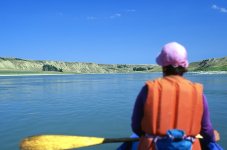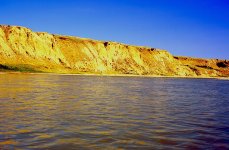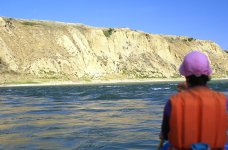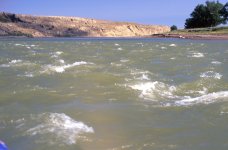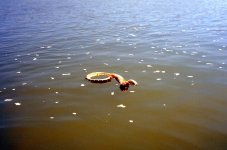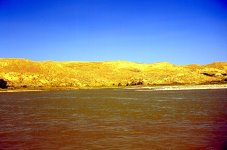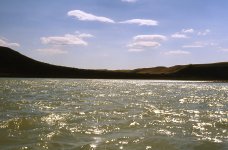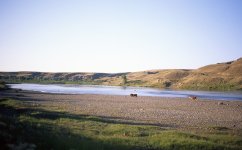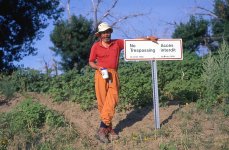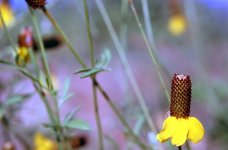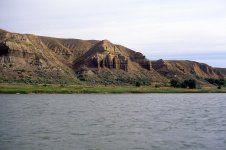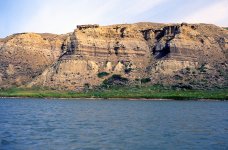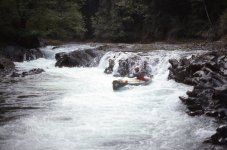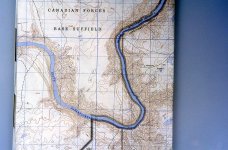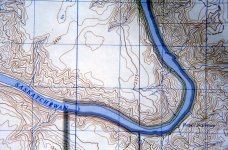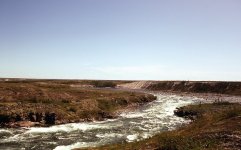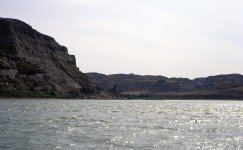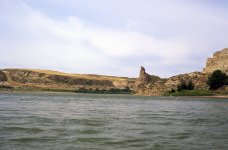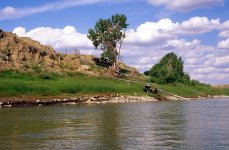
There were quite a few irrigation pumps along this section of the river. They were extremely noisy, and were the least satisfactory part of our Saskatchewan River trip.
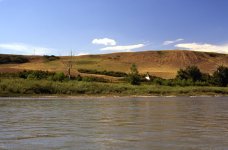
American White Pelicans were also very common. Much more enjoyable than the irrigation pumps.
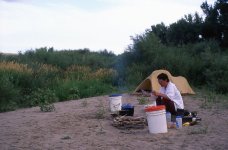
Even though we planned only 11 days for this trip, we still dehydrated all of our suppers, just like our three previous and longer wilderness canoe trips on the South Nahanni, the Thelon and the Coppermine Rivers.
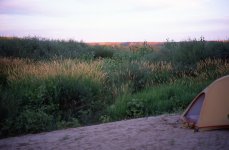
The islands were often overgrown with sandbar willows, but we could usually find suitable camps in the sandy beds of channels created during spring floods.
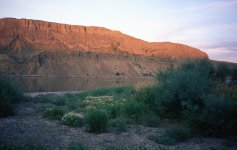
This channel, bare of vegetation, gave us an unobstructed view of the evening glow of the sun on the rim-rock canyon walls.
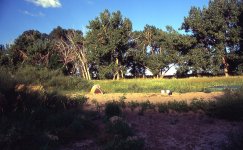
The cottonwood groves came alive with the flight and song of birds every morning.
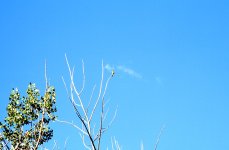
We didn't have a telephoto lens on this trip. You have to believe me that Western and Eastern Kingbirds were quite common in the cottonwood groves.
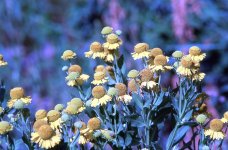
This leisurely trip gave us plenty of time for enjoying plants. Sneezeweed (
Helenium autumnale) so named because at one time it was commonly dried and used for snuff. Its scientific name is
Helenium, because the flower matched the beauty of Helen of Troy. Or so I read.
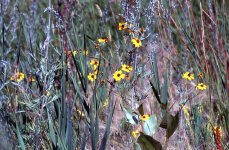
Tick Seed (
Coreopsis tinctoria) is common on sandy sites throughout the Canadian Prairies.
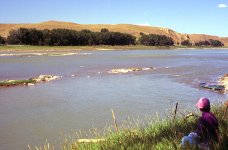
Shells of a fresh water clam, called “Fat Mucket” covered the beaches, making it seem like a day at the ocean. Again, like with the Kingbird, you just have to believe me that there were lots of shells on the beaches. Our photography has gotten a little better over the years.
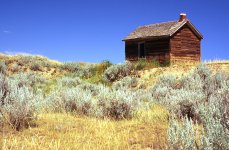
After lunch, a short hike to stretch our legs, and to contemplate the lives of those who came before us on the South Saskatchewan River.
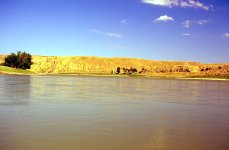
You might remember the map of 'Southern Alberta Rivers' in the beginning of this story. Well that came from the book 'Canoeing Chinook Country Rivers,' by Buhrmann and Young (1982). Their description of the South Saskatchewan River indicates that the first of two "fairly fast chutes" occurs near Mile 90 (km 144). If you look closely, you can see we are approaching this Class I rapid. You might have to squint to actually see it.
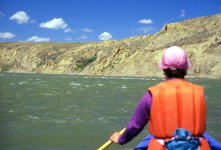
By golly, there it is! We are now in the middle of this rapid, as Kathleen braces for the haystacks at the end of this easy stretch of Class I water. The South Saskatchewan River remains a suitable trip for families and beginning canoeists.
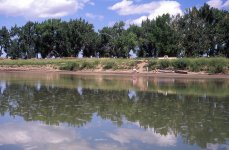
We paddled by family enjoying the South Saskatchewan River on a sunny Sunday afternoon. They ask edus how far we will be travelilng. When we replied “to Estuary, Saskatchewan,” they called out a warning: “Look out for Rapid Narrows!”
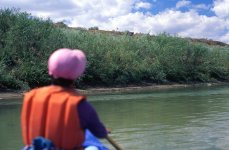
We reached the Suffield military reserve at km 156 (mile 96). The sign, barely visible behind the willows, reads: “Danger! West bank of River for next 52 miles (84 km) is a military training area. Unauthorized entry prohibited!”
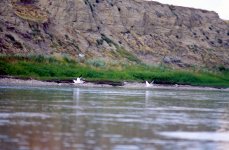
More American White Pelicans, the bird we saw most commonly along the river. It was hard to believe that they had nearly disappeared from the river valley only 30 years ago, but have now recovered because of protective measures.
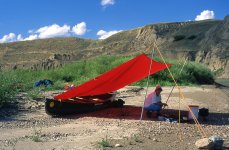
Putting up the tarp for shade I couldn’t find enough big rocks to anchor all of the guy ropes.
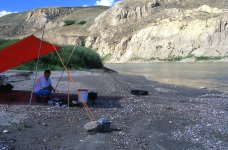
But walking down the river, I did find an old tire submerged in the sand. Usually I am disappointed to find old tires, but not this time. Even with the shade from the tarp it was HOT–HOT– HOT. If only I had a beer.
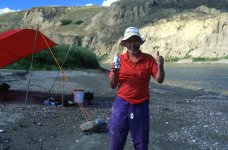
And then, floating down the river, I saw a single, unopened can of beer. The beer tasted great! I'm not making this up. It really happened.
A party of two or more canoes could easily bring a cooler for cold soft drinks and other refreshments.
I was on a roll. I hoped for a tire, and found one. I hoped for a beer, and the South Saskatchewan River delivered one. I don't know if you remember that commercial from the early 1990s for Old Milwaukee beer that featured the Swedish Bikini team? "Say, Kathleen, wouldn't it be great if the Swedish Bikini Team came rafting down the river with a cooler of Old Milwaukee Beer?"
I didn't happen. Just as well, I suppose. The ads were considered sexist, and ran for only a short time.
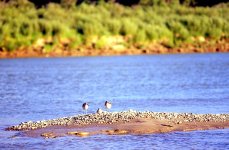
But I did enjoy sitting on the beach, sipping my beer, and sharing the afternoon with a family of Willets.
--------------------------------------------------------------------------------------------------------------------------------------
That's it for now. Got to do some yard work. Can't get that commercial out of my mind, though.
--------------------------------------------------------------------------------------------------------------------------------------

